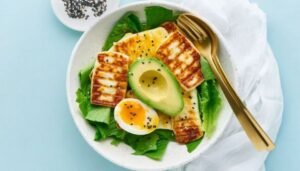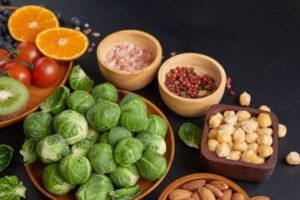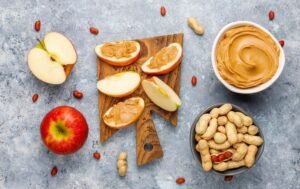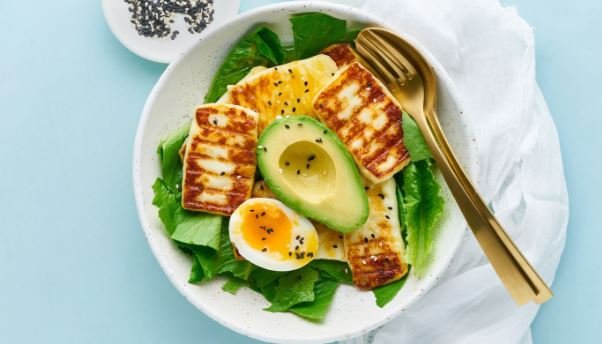The ketogenic diet, or keto diet, has become a popular method for weight loss, focusing on high-fat, low-carb meals that put your body into a state of ketosis. During ketosis, your body burns fat for fuel instead of carbohydrates, leading to potential weight loss benefits. However, creating effective keto meal plans for weight loss requires more than just cutting carbs and increasing fat intake. In this article, we will explore the best options for keto meal plans for weight loss and discuss common mistakes to avoid when starting this diet.

What Are Keto Meal Plans for Weight Loss?
A keto meal plan for weight loss involves carefully selecting foods that are low in carbohydrates, moderate in protein, and high in healthy fats. This macronutrient balance helps your body enter ketosis, which can promote fat-burning and weight loss. When designing a keto meal plan for weight loss, it is crucial to focus on nutrient-dense, whole foods that support overall health, rather than simply following a high-fat, low-carb pattern without considering quality.
The Best Options for Keto Meal Plans for Weight Loss
When planning meals for weight loss on the keto diet, the focus should be on foods that provide essential nutrients while helping to control hunger and cravings. Here are some of the best options for a successful keto meal plan for weight loss:
1. Lean Meats and Fatty Fish
Protein is an essential part of any meal plan, including keto. Opt for lean meats such as chicken, turkey, or grass-fed beef, as well as fatty fish like salmon, mackerel, and sardines. These options provide a good source of protein and omega-3 fatty acids, which support metabolism and overall health.
2. Low-Carb Vegetables
Non-starchy vegetables, like spinach, kale, broccoli, zucchini, and cauliflower, are great choices for a keto meal plan for weight loss. They are low in carbohydrates, high in fiber, and packed with vitamins and minerals that help support your health during weight loss.
3. Healthy Fats
Healthy fats are the cornerstone of any keto diet. Sources like avocado, olive oil, coconut oil, and grass-fed butter provide the fats necessary to keep you in ketosis. Incorporating these healthy fats into your meals will keep you satisfied longer, reducing the chances of overeating or giving in to unhealthy cravings.
4. Nuts and Seeds
Nuts and seeds, such as almonds, walnuts, chia seeds, and flaxseeds, are not only good sources of protein but also contain healthy fats and fiber. They are perfect for snacking or adding to salads and smoothies in your keto meal plan for weight loss.
5. Full-Fat Dairy
Full-fat dairy products like cheese, Greek yogurt, and heavy cream are great additions to a keto meal plan for weight loss. They provide both fats and proteins, and the high-fat content helps you feel full and satisfied, reducing hunger between meals.

Common Mistakes to Avoid When Following Keto Meal Plans for Weight Loss
While keto meal plans for weight loss can be highly effective, there are several mistakes people often make that can hinder their progress. Here are the most common pitfalls and how to avoid them:
1. Not Eating Enough Vegetables
A common mistake when following keto meal plans for weight loss is neglecting to eat enough vegetables. Many people focus too much on fats and proteins, forgetting that vegetables like leafy greens, cauliflower, and zucchini provide essential nutrients, fiber, and antioxidants. Fiber is particularly important on keto because it helps with digestion and keeps you feeling full, which can support weight loss efforts.
2. Overeating Protein
While protein is an essential component of a keto meal plan for weight loss, consuming too much protein can be counterproductive. Excess protein can convert into glucose through a process called gluconeogenesis, which may kick you out of ketosis and hinder your ability to lose weight. Aim for moderate protein intake and focus more on healthy fats to keep your body in a state of ketosis.
3. Consuming Too Many Processed Keto Foods
Many pre-packaged, processed keto-friendly foods are available, but they may be loaded with unhealthy additives, preservatives, and artificial ingredients. Relying on processed snacks or meals can also lead to overeating, as they often don’t provide the same level of satiety as whole foods. To maximize the benefits of your keto meal plan for weight loss, stick to fresh, whole foods that are nutrient-dense.

4. Not Tracking Carbohydrate Intake
While the keto diet encourages cutting carbohydrates, it’s easy to unknowingly consume more carbs than you realize, especially from hidden sources like sauces, dressings, and certain vegetables. Tracking your carbohydrate intake is crucial when following a keto meal plan for weight loss to ensure you stay within your carb limit and maintain ketosis.
5. Not Staying Hydrated
Ketosis can lead to increased water loss, so it’s essential to stay well-hydrated while following a keto meal plan for weight loss. Drinking plenty of water helps your body function properly, reduces feelings of hunger, and supports fat loss. Additionally, make sure to replenish electrolytes (like sodium, potassium, and magnesium) that may be lost during ketosis.
6. Not Adjusting Your Plan to Your Needs
Everyone’s body reacts differently to the keto diet, and what works for one person may not work for another. If you’re not seeing the results you expected, consider adjusting your keto meal plan for weight loss by experimenting with your fat and protein intake or altering your carb limit. Consulting a nutritionist can help you personalize your plan for optimal results.
How to Build a Balanced Keto Meal Plan for Weight Loss
To create a balanced keto meal plan for weight loss, start by focusing on the right food choices. Here’s an example of a simple day’s plan:
- Breakfast: Scrambled eggs with spinach, avocado, and a side of bacon.
- Lunch: Grilled chicken salad with olive oil dressing, mixed greens, and cheese.
- Dinner: Baked salmon with steamed broccoli and a side of mashed cauliflower with butter.
- Snacks: A handful of almonds or a small portion of full-fat Greek yogurt.
The key to success on a keto meal plan for weight loss is consistency and careful selection of nutrient-dense, whole foods. Incorporating healthy fats, protein, and low-carb vegetables while avoiding processed foods and excess protein will help you achieve your weight loss goals.

Conclusion
Keto meal plans for weight loss can be highly effective when done correctly. By choosing the best options—like healthy fats, lean proteins, and low-carb vegetables—and avoiding common mistakes, such as overeating protein or neglecting vegetables, you can optimize your weight loss efforts. Make sure to personalize your keto meal plan for weight loss based on your body’s needs and stay consistent to see lasting results. With the right approach, the keto diet can help you achieve your weight loss goals and improve your overall health.




